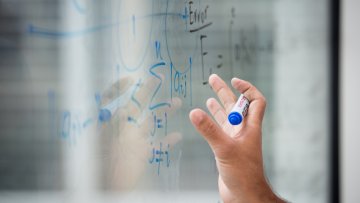Axion Cosmology
Abstract
Axions are ubiquitous in string theory compactifications. They are
pseudo goldstone bosons and can be extremely light, contributing to
the dark sector energy density in the present-day universe. The
mass defines a characteristic length scale. For 1e-33 eV<m< 1e-20
eV this length scale is cosmological and axions display novel
effects in observables. The magnitude of these effects is set by
the axion relic density. The axion relic density and initial
perturbations are established in the early universe before, during,
or after inflation (or indeed independently from it). Constraints
on these phenomena can probe physics at or beyond the GUT scale. I
will present multiple probes as constraints of axions: the Planck
temperature power spectrum, the WiggleZ galaxy redshift survey,
Hubble ultra deep field, the epoch of reionisation as measured by
cmb polarisation, cmb b-modes and primordial gravitational waves,
and the density profiles of dwarf spheroidal galaxies. Together
these probe the entire 13 orders of magnitude in axion mass where
axions are distinct from CDM in cosmology, and make non-trivial
statements about inflation and axions in the string landscape. The
observations hint that axions in the range 1e-22 eV<m<1e-20 eV may
play an interesting role in structure formation, and evidence for
this could be found in the future surveys AdvACT (2015), JWST, and
Euclid (>2020). If inflationary B-modes are observed, a wide range
of axion models including the anthropic window QCD axion are
excluded unless the theory of inflation is modified. I will also
comment briefly on direct detection of QCD axions.



